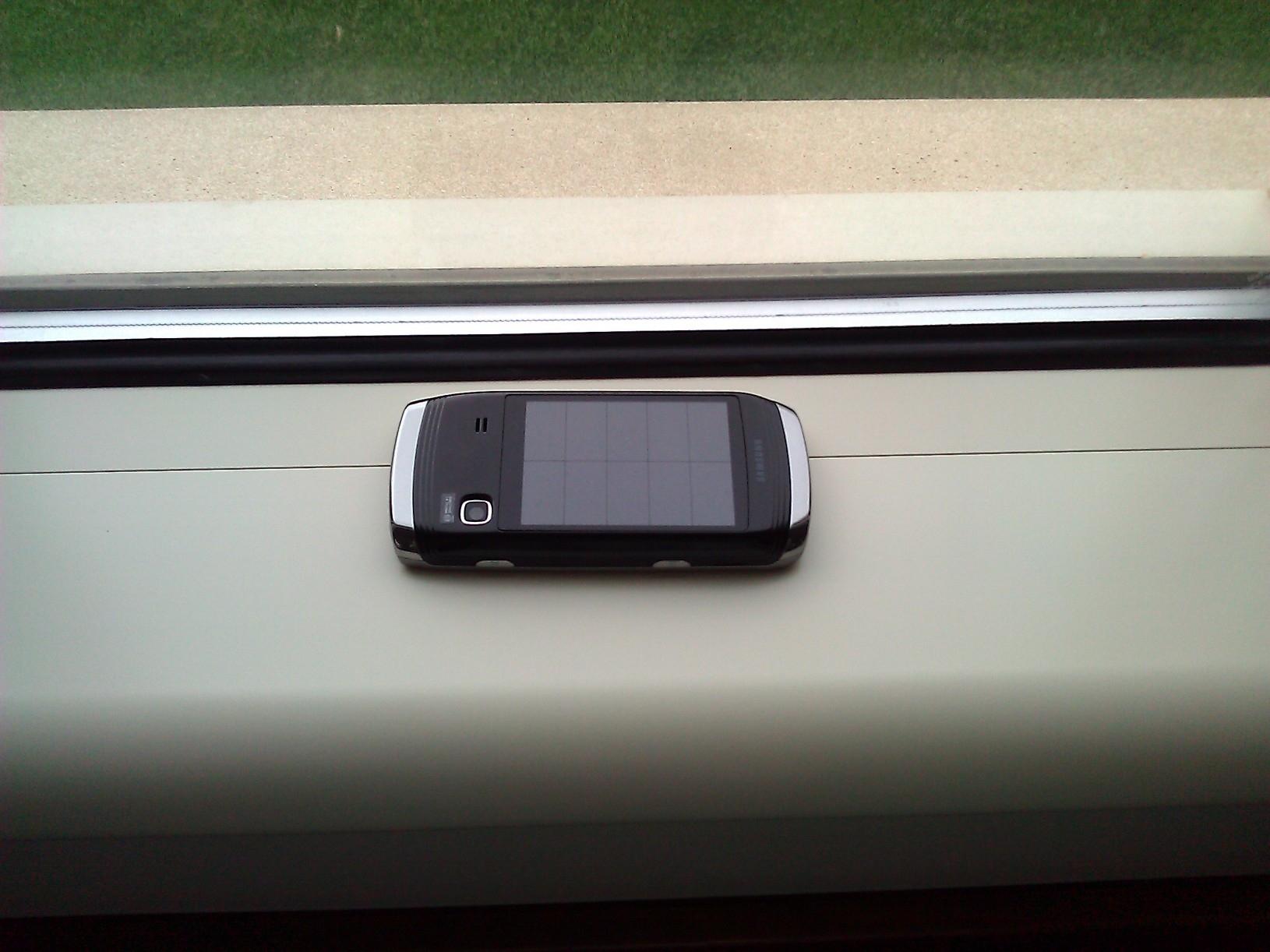
Right after I started here at PhoneDog, there was one particular article I was delegated to write that stuck out to me. Every so often, I see it in passing, when I search the site or when I feel like reveling in how much my writing has ... matured. (Oh, was I comma-hungry then!) The device I wrote about was one of a kind, the Sagem Puma Phone, and it had just "roared" through the FCC.
What was so special about the Puma Phone, though, was not only it's pebble-like design or all of the sports-centric features, like a pedometer or "walk/run/bike applications." The majority of the back panel (battery door) for the Puma Phone was a solar panel, meant to charge the device when the user was outside.
Although it was marketed as a "smart" phone, it was more or less a feature phone with a couple extra features. And it was never really aimed at the U.S. market. It came and went with little to no fanfare – which is particularly saddening due to the individuality of the device. I digress. At the time, I had hoped that solar charging would be gaining traction in mobile devices, if for nothing else, to offset the up-and-coming trend of mobile phones with laughable battery life.
Alas, nearly two years later, there has only been one other phone that I can recall with a solar panel.
The Samsung Replenish on Sprint, like most phones, comes with a removable battery door. Sold separately, however, was an interchangeable solar power battery door. Simply flip the phone upside down when you're in sunlight and presto! The phone will charge, albeit slowly, without any cables, a charging backpack or AC adapters.
This, of course, isn't meant to replace your primary charging method. After all, how would you charge your phone at night while you sleep? But the rate at which the solar panel on the Replenish would charge wasn't fast enough to legitimately consider it "charging" a device. Instead, think of it as trickle charging. If you left the phone outside, face-down and in direct sunlight, the phone might fully charge. But flipping it upside down in sunlight for an hour isn't going to fully charge the battery.
More or less, it's meant to stifle battery drain.
What I don't understand is why more isn't being done with solar power. It's not efficient enough to completely replace AC charging, but battery life hasn't gotten any better. At most, manufacturers have only managed to pack the same-sized phones with much more capacity, which has caused another problem in itself. And that doesn't combat the trickle drain on standby that so many devices suffer from.
Yesterday, my Galaxy Note drained from 100 percent to 78 percent over the course of five hours and 17 minutes. That doesn't sound so bad, right? When you consider the a screen-on time of six minutes and 40 seconds, it's far more bleak. The phone had been unplugged for over 317 minutes and was on standby for 311 of those minutes. Roughly two hours of that time was spent in a total dead zone with absolutely no coverage, which could certainly be to blame for the battery drain.
If I had the ability to charge my phone via solar energy, however, there would have been at least three hours and some change that the phone could have been charging (read: not draining).
Lately, I have spent a lot of time outdoors, sitting on my front or back porch writing. And I have been thinking about how much better my phone's stamina would be if it had supplementary charging sans cables or extra baggage. Lugging a power strip outside to charge all of my devices while I bask in the sun and work isn't exactly ideal. But having a couple devices charge themselves in the sunlight would be nice.
Maybe solar charging just isn't efficient enough – we can't expect it to keep our devices charged single-handed. Or maybe OEMs just don't see the advantage. But I would happily buy and use a phone with the option of solar charging; that is, if it's more along the lines of a high-end device, not the Samsung Replenish or Puma Phone.
It's worth noting that there are hundreds of options when it comes to third-party solar charging solutions. Search "solar power cell phone charger" on Amazon.com and you will find a long list of options. But many of them are geared towards people looking for a way to charge their phone while camping or something of the like. They require you to carry around bulky solar panels, rechargeable battery packs and cables. What I'm talking about is either a built-in option like on the Puma Phone or an interchangeable, OEM solar panel battery door.
What say you, ladies and gents? Do you wish there were more phones with solar power battery doors? If nothing else, it could certainly help in a pinch and could prolong battery drain. Would you buy a replacement solar powered battery door for you phone? Or would you rather just use charging battery packs, a Powerbag or spare batteries?
Image via Sprint Forums